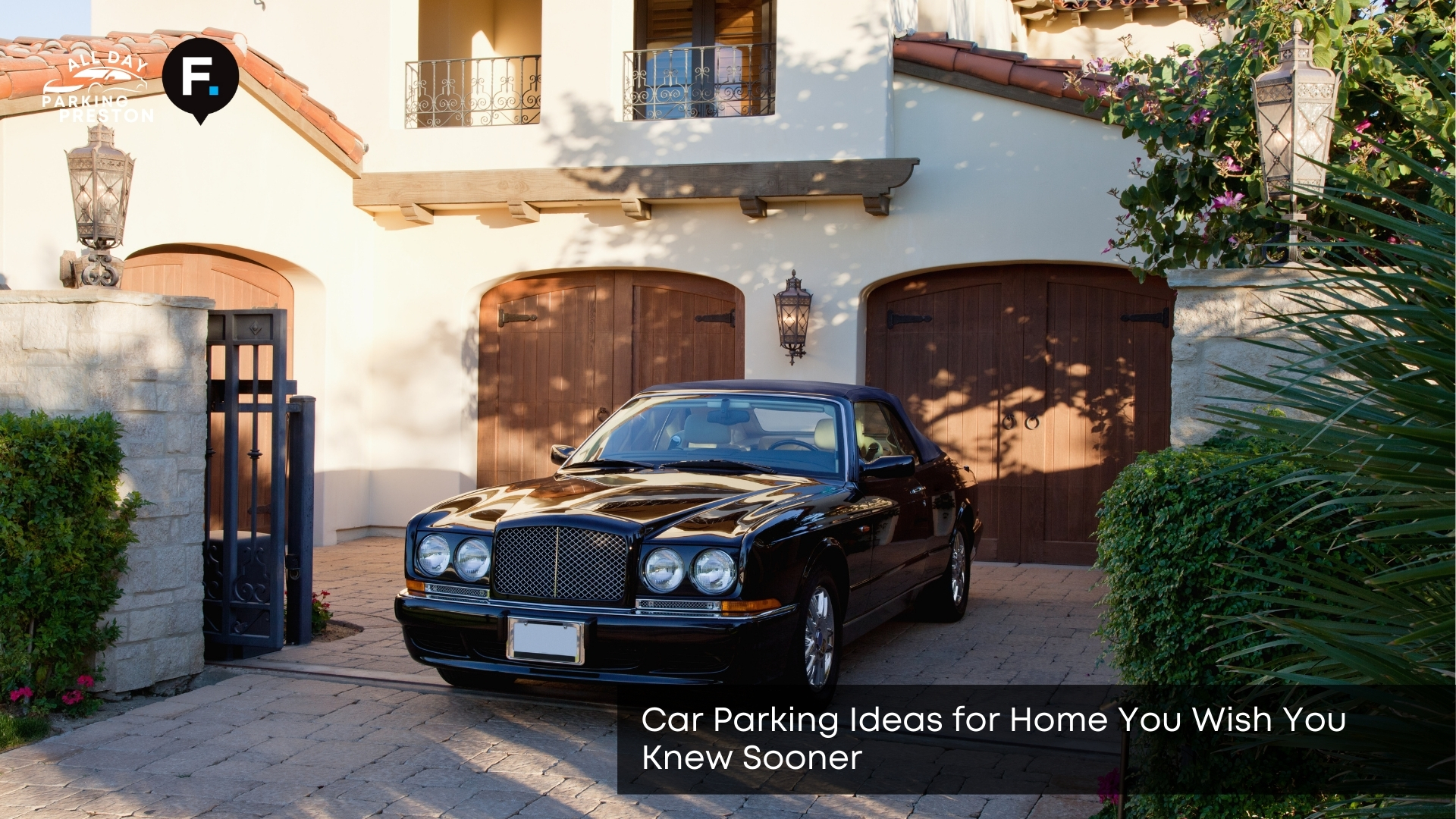Finding the perfect place to park at home can be more challenging than you think. Whether you have a small driveway, a tight street, or multiple cars, good car parking ideas for home can make a big difference. With the right adjustments, you can transform a challenging space into something useful, tidy, and even stylish. In this guide, we’ll walk through clever, practical, and sometimes surprising solutions that can help you park smarter at home.
What Are Some Smart Ways to Maximise Home Parking Space?
Some of the best ways to maximise home parking space include widening your driveway, adding angled parking, or converting part of your garden. A gravel surface or block paving can make a tight area feel more open while still looking neat. If you have a garage, consider clearing it for use or adding foldable storage to free up floor space. Even moving a fence or hedge by a metre can give your car the room it needs. Once you visualise your home as a layout, more space-saving options become apparent.
Can a Simple Driveway Redesign Make Parking Easier?
Yes, a simple driveway redesign can make parking easier by improving access and turning space into something more flexible. Replacing curved or awkward layouts with clean lines or right angles can help you fit more cars. Using contrasting lines or paving stones gives visual clues to guide your wheels into place. If you live on a slope, adding textured surfaces can also improve grip and safety. A few layout tweaks make daily parking much less of a chore.
Should You Consider a Car Turntable or Sliding Track?
You should consider a car turntable or sliding track if your space makes turning difficult or reversing out of the space risky. A turntable rotates the car, so you can always drive forward. At the same time, a sliding track shifts your vehicle sideways into tight spots. These are often seen in city homes with small front gardens or shared driveways. While more costly than standard changes, they can solve major access issues and even boost property value. For homes with high use or limited space, these tools are worth exploring.
How Can Vertical or Stack Parking Work at Home?
Vertical or stack parking systems utilise platforms or lifts to allow one car to park above another. These are useful in homes with limited ground space but high roofs or side clearances. A car lift can be installed in a large garage or a sheltered area and is ideal for households with two cars. Some fold flat when not in use, saving room for walking or storage. If you’re short on space and have two vehicles, stack parking can be a smart long-term solution.
Are There Budget-Friendly Parking Ideas for Small Spaces?
Yes, budget-friendly parking ideas include gravel drives, fold-down bollards, wheel guides, and turf reinforcement grids. Instead of pouring concrete, you can use interlocking mats that protect grass while allowing parking. Fold-down posts keep your spot safe while giving access when needed. Clever marking or paint can guide drivers without the need for costly kerbing or walls. Even small touches, such as mirrors or solar lights, can make your small space more functional. When home space is limited, nearby short stay parking Preston options can fill the gap affordably and conveniently.
What Legal Rules or Planning Permissions Might Apply?
You may need planning permission for certain changes, such as creating a new dropped kerb, paving over a front garden, or installing a turntable. Councils often have rules about surface drainage, especially with impermeable materials. In conservation areas or listed buildings, you must follow additional guidelines. Always check with your local planning office before starting work. Following the rules helps avoid fines and future problems.
Can Smart Tech Help You Park Better at Home?
Smart tech can help you park better at home by giving real-time guidance and safety features. Parking sensors, wireless cameras, and even laser guides make navigating tight spaces easier. Smartphone apps let you control gates, lights, or even your turntable. If you park in the dark, motion-sensor lighting can improve safety. These small upgrades bring comfort and precision to your daily routine. For trickier spots, these tools work hand in hand with parking downhill tips to keep your car stable and safe.
What Mistakes Should You Avoid in DIY Parking Design?
Common mistakes include underestimating car size, skipping drainage planning, or using weak materials that don’t last. Many people forget to allow room for doors to open fully, resulting in awkward exits. Others choose surfaces that become muddy or cracked with use. Always measure carefully and consider how the space will age over time. Avoiding these errors gives you a smarter, longer-lasting parking area.
How to Pick the Best Solution for Your Home and Lifestyle
To select the best solution, consider your vehicle size, the number of drivers, your daily habits, and the available space. A single driver might need different features than a growing family with two cars. If you work from home, appearance may matter more than frequent access. Balancing cost, convenience, and long-term use helps you make informed choices. Your ideal setup starts with knowing what you need most from your home car park. A helpful Preston parking guide can also give you ideas beyond your driveway, including local options for when space runs tight.


Leave a Reply